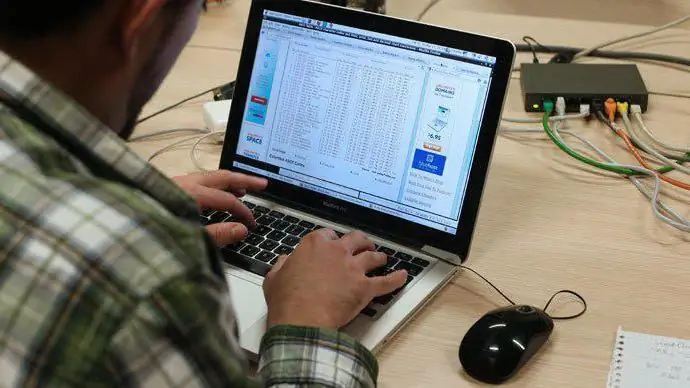Knowing how to set up a DVR to view over the Internet to the Web is critical to installing and connecting to the World Wide Web video surveillance system. Working with a network of cameras with one router is not technically difficult. To do this, you need to know the basic computer networks and the security system. In the past, they were controlled by a security guard who was locked in the room all day, watching monitors to make sure nothing illegal was happening on the premises.
Modern devices have the ability to view the security system remotely, in real time. The technology has advanced so much that it can send status change notifications directly to a mobile phone or tablet so that the user knows what events are captured by the security camera.
Wireless Camera Router
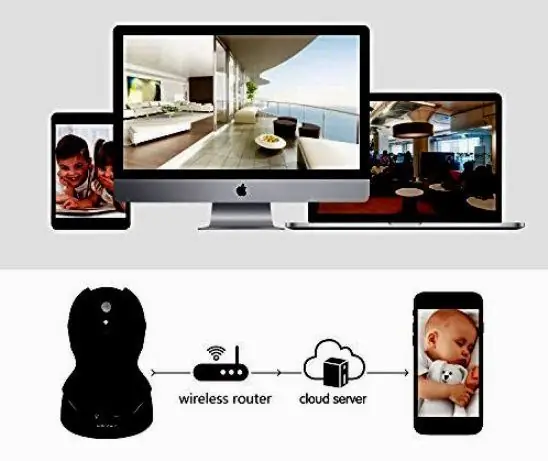
A router is a device that transfers data between network connections, it provides the ability to control multiple points simultaneously from one Internet connection. Without it, you cannot set up the DVR for Internet viewing. Today, many homes have Wi-Fi routers that connect devices to the Internet wirelessly. For remote access to the DVR, almost any router will work. Some of the big brands are Linksys (Cisco), D-Link, Netgear, Belkin and Apple.
Ethernet CAT5 cables are used to connect the system to the Internet. Digital devices configured to access the DVR remotely come with a cat5 network port, which is sometimes sold with the system. But in most cases it is too short. Therefore, it is better to purchase an additional desired length. In addition, you will need one Ethernet cable to connect the modem to the router. They also usually come with their own short ethernet cable, which is not enough to tie a security system. And it is better to pre-purchase a new one of the required length.
Monitor connection

You will need a monitor to set up your Tantos DVR for internet viewing, and later you can view the system remotely. DVRs have outputs that are capable of connecting a TV as a monitor using BNC, HDMI, VGA, or even composite RCA connections, inequipment purchased.
Algorithm for setting up a DVR for viewing via the Internet:
- Connect the modem to the Internet. They usually have a series of indicators on the front panel that show the status so that the user knows how the device is currently functioning. Typically, a router has one port for connecting to the World Wide Web. Which is kept away from others and placed on the back of the router for devices connected to the Internet.
- The connection is made with a CAT5 cable.
- Connect DVR to monitor via HDMI or VGA port, both on DVR and monitor. The first one is the preferred one to use.
- Now that the equipment is set up and connected, make sure everything works.
- DVRs may have menus that look slightly different, but the settings are generally the same. The same goes for routers.
Instructions for setting up the security system
The next step is to configure the DVR to view via the Internet remotely: Access via a web browser. It is carried out using a mouse or a wireless remote control. In the DVR system menu, select the "Network" submenu and make sure the "DHCP" and "Web Service" checkboxes are checked.
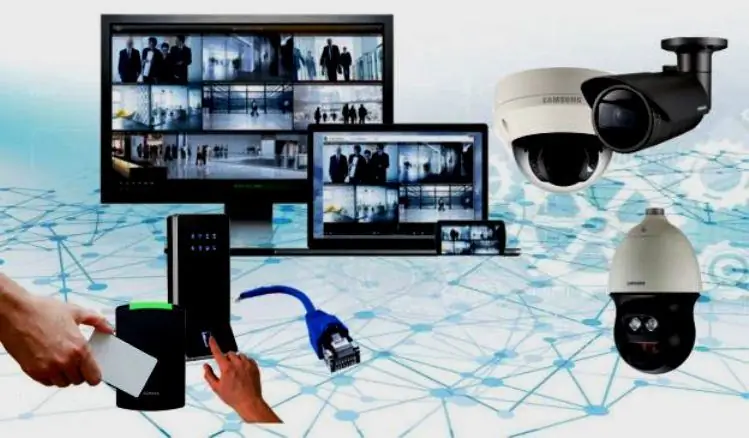
DVR network setup:
- Click the "Apply" button, save the settings and link to the IP address. This is the local IP address of the DVR and itwill only be available on a PC connected to the same network router as the digital DVR (wired or wireless).
- Open the web browser from a computer connected to the same network as the DVR.
- Enter the IP address in its address bar, for example:
- Perform port forwarding and make sure you can connect to the DVR using the local IP address before going to the DVR settings for Internet browsing.
- To access the digital DVR and view video from the security cameras connected to it remotely, you need to configure the router to forward traffic from the local network to the digital device.
- Make sure that ports 8080 and 554 are open using the port checking tool in the DVR Internet Access Setup. If the port is open, you need to use the remote IP with the IP DVR tool.
- Enter it as follows through the web browser https://ipaddress:port. For example, if the IP address is 74.96.36.98, it should look like
- If the ports are closed, you need to call your DSL provider, you may need to connect your modem to a third party router.
- Open a web browser and enter the external IP address.
- Enter the username and password. Default: ADMIN, 1234.
- When the connection is made, you can see the cameras.
New RVI DVRs
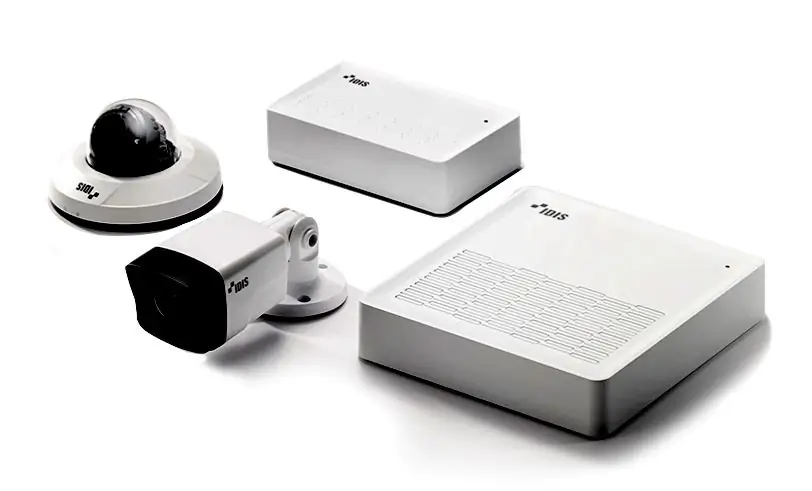
RVI cameras have applications to set up DVRs over the Internet for remote viewing from iPhone, Android, Mac and Windows. The DVR software allows you to watch security cameras through the internal LAN. The built-in remote station also allows you to view previously recorded surveillance videos. The integrated remote system, sometimes referred to as the DVR viewer, runs on a computer running Microsoft Windows.
Setting up RVI for web browsing:
- Assign the DVR an IP address.
- Connect to DVR in LAN.
- Set up port forwarding on the router.
- Debug static DHCP IP address for DVR.
- Create and configure a DNS Dynamic account.
- Debug dynamic DNS on the router.
- Perform setting up the RVI for viewing over the Internet by connecting it remotely.
- Assign an IP address to the NVR.
- Make sure the DVR is connected to the network by connecting an Ethernet cable to the back of the DVR and the other end to the router.
- Enter the DVR by pressing the menu button on the DVR or remote control.
- When prompted to enter a password, press the "OK" button on the DVR or remote control.
- The default password for DVR is empty. If it is already installed, enter it and click "OK".
- Select "External device" in the system menu.
- In the menu set "TCP/IP Setting".
- On screen settingTCP/IP Internet Surveillance DVR define DHCP Setup and press Enter.
Automatic DHCP
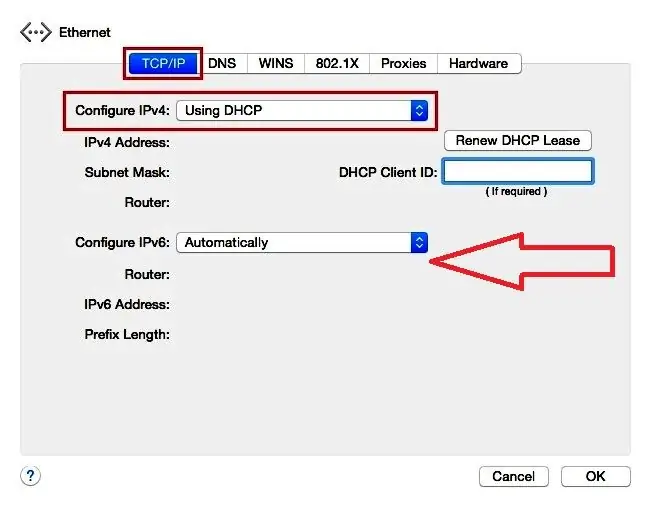
On the DHCP setting screen, confirm that the DHCP mode is set to automatic. If this is not the case, adjust it by pressing the "OK" button.
DHCP Mode Configuration Algorithm:
- Select "Detect IP" and press enter. Refresh the screen and wait for the new data to fill in.
- Pay attention to the internal IP that the router has assigned to the DVR and port forwarding will be set up for it.
- Select DHCP Mode and press OK. The mode will be changed manually. This ensures that the DVR will always assign the same IP address from the router. This is important because if the power of the router is turned off, it may assign a different IP to the DVR, and then the user will not be able to access the DVR remotely.
- Press the menu button once to return to the setup and setup screen of the TCP/IP DVR.
- On the screen, select the IP configuration setting, press Enter, and confirm the port number of the DVR. The default port is 8000. If the DVR is not set to this port, change this value to 8000.
- Press "Menu" repeatedly on the DVR until it appears with the live view of the cameras.
- Select Manul for joining.
- Enter the IP address you noted on the DVR's TCP/IP setting screen in the "Address" field. If any of the numeric fields in the IP address contain leading zeros, they should be removed. For example, if the IP address of the DVR is 192.168.000.066, enter 192.168.0.66.
- Dial 8000 for the port.
- Enter admin for USER ID.
- Leave the password blank if it has not been previously set, or enter it if it has been created.
- Press "OK" after finishing data entry.
Connect your phone to Hikvision DVR
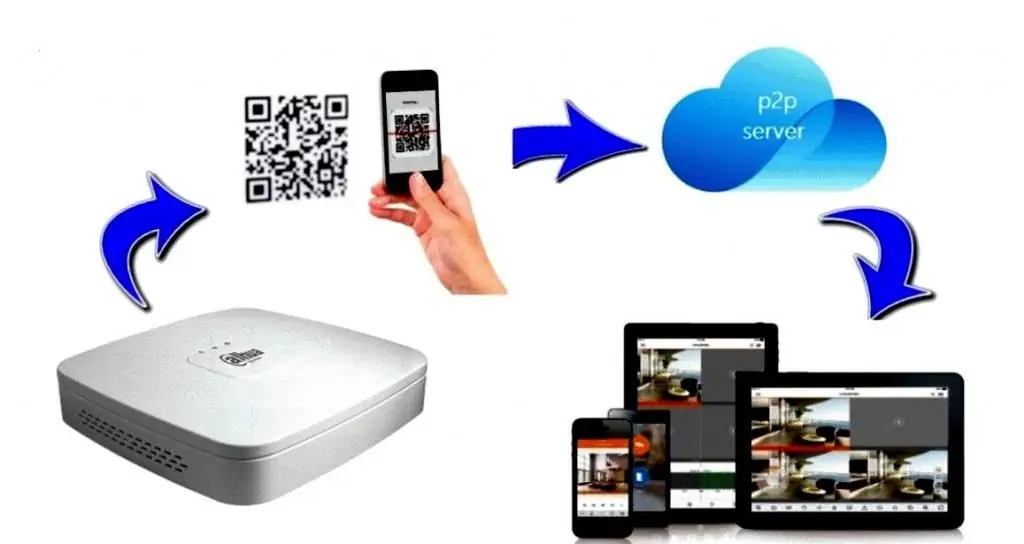
The steps to access Hikvision DVR from your mobile phone are very simple. Install the iVMS-4500 app on the mobile phone, click the Hik-connect button to create an account, and finally add the DVR by pointing the QR code on the mobile camera.
Step-by-step process for setting up a Hikvision DVR for web viewing:
- Install the application on the mobile phone. Now that you have the basic information about the DVR's IP address and ports, you can download the program to access the DVR remotely.
- Open the Play Store on Android devices or the App Store on IOS devices to download and install the Hikvision iVMS-4500 app.
- Create an account by clicking "Register HIk-Connect" in the next window.
- Enter your email address and click the "Get Verification Code" button
- Check mail, enter code, "Next" and create a password.
- Add DVR to iVMS-4500 APP.
- Open the iVMS-4500 and press the (+) button.
- The program opens the camera to scan the QR code that is in the DVR.
- The next window asks for the code located on the DVR.
- After entering it, the application shows the connected device, thus setting up the Hikvision DVR for viewing via the Internet is completed.
Setting up a video surveillance system
The idea is to initially connect the cables from the digital DVR to the router and work in a local configuration for testing, and then in a remote network in normal control mode.
If the user already has access to the DVR from the Internet using the mobile application, and the local and remote configuration in test mode has shown normal operation, but something still does not work properly in normal mode, you can follow the steps below.
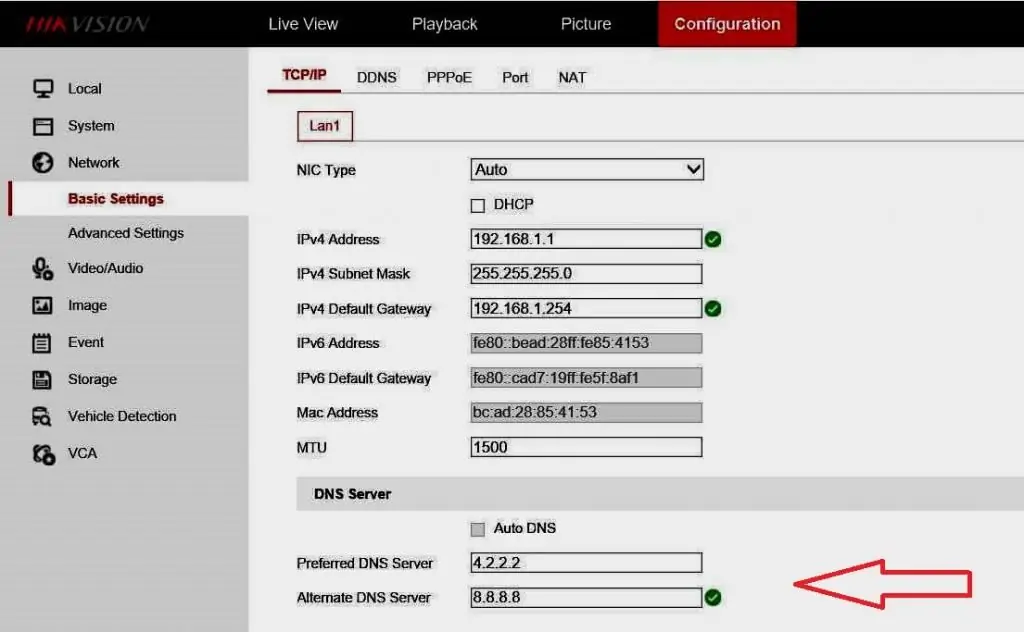
DVR - local connection and setup:
- Connect DVR with cat5e network cable to router.
- Connect the router to the ISP. When setting up the router of the DVR, pay attention to the router. It usually has blue ports that are used for internal devices and a yellow port for connecting to the Internet.
- Check local connection to DVR.
- Before configuring the remote mode, make sure you can access the DVR using a computer or laptop using web browsers: Internet Explorer, Google Chrome or Firefox.
- Most digital DVRs and IP cameras are compatible with Internet Explorer (IE), so it is recommended to try this web browser first and then others.
- In it (IE), enter the IP address of the DVR, andalso the username and password that are generated.
- Normally, when a user tries to access the DVR for the first time through a web browser, a message appears asking you to install the plug-in. Just click to accept the offer and unpack it.
- After entering the correct username and password, you can see your cameras through the web browser, which means that the local installation is OK.
- DVR works properly over LAN and sends video to web browser (IE).
- Make sure the DVR has all the correct Network information for the remote access configuration, which can be checked in its menu.
- Click on the DVR menu "Configuration" and "Network".
- In the network basic setting menu, check the following: IPV4 DVR IP address according to its range, IPV4 subnet mask, usually the same as the computer mask, IPV4 default gateway is the IP address of the router, DNS server can be use 4.2.2.2 and 8.8.8.8.
- If DHCP - Dynamic Host Configuration Protocol is checked, the DVR will get all the information from the router, just make sure it is correct and uncheck the DHCP box.
- Set up the DVR ports, the program uses them to communicate with the web browser, computer software and mobile application. These are virtual ports, not physical ones. Information is available in the "Network" menu in the "Basic settings and port" section.
Router configuration for Hiwatch

After completing the camera setup, it's time toconfigure the router. First you need to consider what configurations will need to be done to set up the Hiwatch DVR for Internet viewing:
- Enable HTTP remote access so that the router can be accessed from any location.
- Specify the APN name for the SIM card used so that the router gets the public IP.
- Set up a port forwarding rule that forwards all connections from one port to IP cameras.
- Enable HTTP remote access, enter the web interface of the router to the administration page: System → Administration.
- In this window, go to "Access Control" and find the "Enable remote access via HTTP" field, where they put a tick.
- After configuring the Hiwatch DVR to view via the Internet with remote access, the router becomes vulnerable to malicious attacks throughout the World Wide Web. It is highly recommended that after enabling remote access, change the router's default password to a string, your own password in System → Administration → General → Admin Password.
- Set the APN while in the web interface of the router. Go to the Mobile page located on the Network tab: Network → Mobile.
- In the Mobile window find the APN field and enter the ISP APN. In some cases, the SIM card does not require it to obtain a public IP address. If so, just check the WAN router's IP address - if it's a public IP, the user doesn't need to setAPN.
- The easiest way to find out what IP is on the network is to log into the router's web interface and check the WAN widget on the "Overview" page.
- Set up port forwarding, on the firewall page go to the tab of the same name. Scroll down to the bottom of the page and find the New Port Forwarding Rule section.
Create a custom name for the new rule, set the following parameters:
- Protocol: TCP + UDP.
- External port(s): 8888.
- Internal IP: 192.168.1.64 (sample).
- Internal port (port): 8888.
Next, press the "Add" button after making changes. After the new rule, the user will be redirected to the settings window. The rule will appear at the bottom of the port forwarding list, where you can check its status and make additional settings.
Setting dynamic DNS
Dynamic DNS (DDNS or DynDNS) is a method of automatically updating a name server in the DNS Domain Name System in real time, with active DDNS configuration of its configured hostnames, addresses, or other information.
Dynamic setting is required if the SIM card has a dynamic public IP address. You can find more information about what a dynamic external IP address is, but in general this means that it can change over time, usually when disconnected or re-registered on the Network. Dynamic DNS assigns an IP hostname and updates that name continuously. But even if the IPchange, DDNS will assign the same hostname to a new IP, making the router reachable via the same name at all times.
You need to use an external DDNS service to create a hostname and assign it an IP. Routers support many of these services. You can find a complete list of DDNS services in the "Services" → "Dynamic DNS" section of the router's web interface. Now that you have finished configuring your devices, you should check if the configuration works correctly. Two common ways to set up a router for the DVR over the Internet are through a media player and a web browser.

You can view the live feed from the camera using the VideoLAN Client (VLC) player. VLC works on all systems:
- Download and install the VLC player on the computer.
- Open it, go to Media → Open Network Stream in the top left corner of the window, or just press Ctrl + N on your keyboard.
- In the Network Stream window, you will need to enter the address of the Real Time Streaming Protocol (RTSP) of the camera. It should look something like this: RTSP://admin:[email protected]:554/.
- Be sure to set up the required RTSP port forwarding rule and don't forget to set the correct port which can be viewed and changed in the camera's web interface to check the configuration via a web browser.
- Enter the WAN IP address of the router in the browser's URL field, but add a colon (:) and the HTTP port number at the end. This will redirect to the webcamera interface.
- After the user has logged in, a window should appear.
- Click on the link in the live view window. As a result, the required plugin installation file is loaded. Close Internet Explorer and run this setup file from the computer.
- After the installation is completed, launch Internet Explorer and enter the camera again. You will be prompted to allow access to the plugin for use with the browser. If so, click "Yes" and continue. You can then view the live feed from the camera or reset the dash cam.
Launching Dahua Device
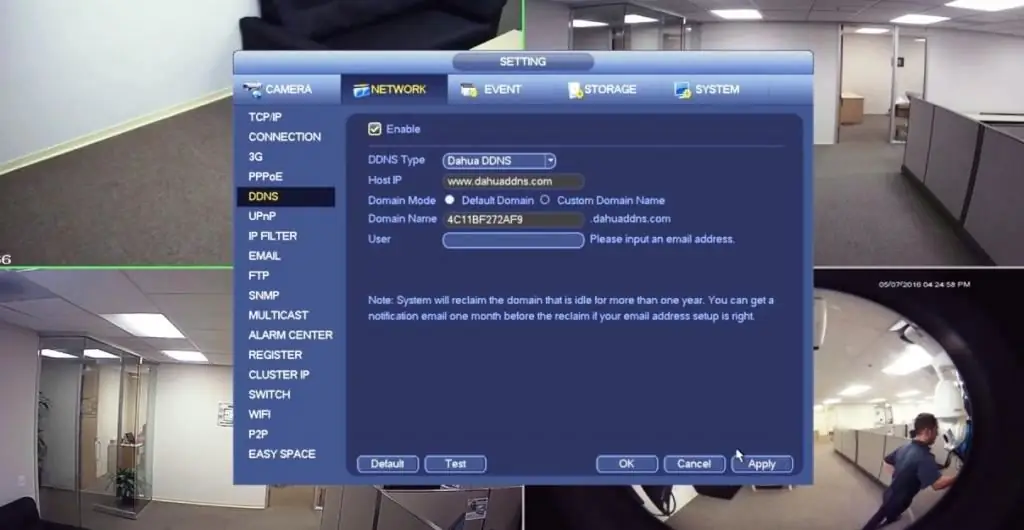
It is very common to set up dynamic DNS on a Dahua device. The use of built-in DNS means that the owner does not need to constantly keep the computer online in order to remotely access the device.
Algorithm:
- Login to the camera using the local IP address.
- Press "Network".
- Click DDNS and then "Enable" to configure the Dahua DVR to view over the Internet.
- Select No-IP from the DDNS Type dropdown list.
- Enter the following information: Host IP, if this section is not filled in automatically, add the following: dynupdate.no-ip.com
- Turn on domain mode by clicking "Custom domain name". This will be a hostname that is created with No-IP, for example example.ddns.net, and enter the username - the email address of the non-IP account.
- Press "OK" or "Test" at the bottom of the page.
- The Dahua device will now send updates whenever the IP address changes.
This arrangement allows the security cameras to be monitored while the user is away from the location, and is one of the most important features of modern DVRs. This is a real opportunity not only to prevent crimes, but also to control what is currently happening in the places where cameras are installed. Equally important is the ability to remotely view and backup videos so that a copy is always kept, even if they are damaged or stolen.
Modern devices have remote settings for DEXP DVRs and specialized cameras. This is convenient if the owner notices that some DVR configurations need to be changed. Especially if the user can't get to where the cameras are installed, it will allow him to change the settings wherever he is.






